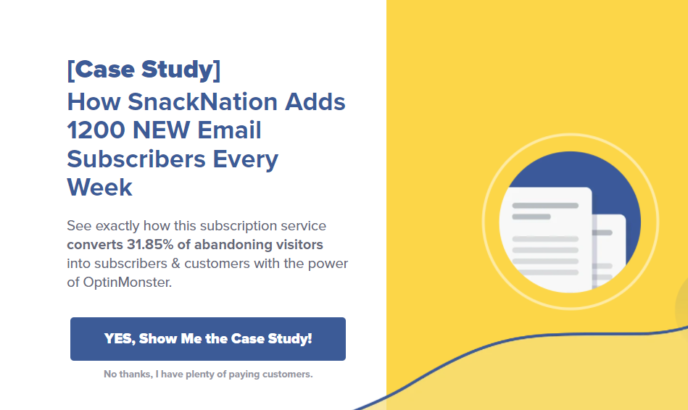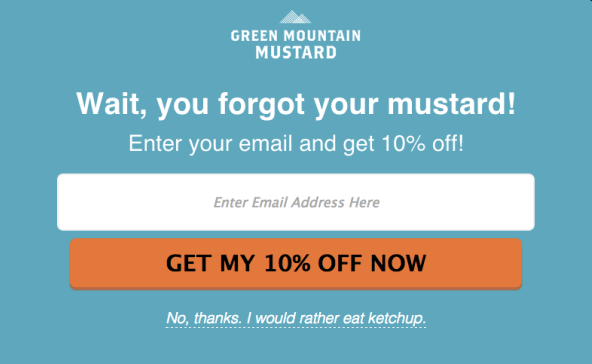Are you interested in turning your website traffic into qualified leads? If so, you’re not alone.
Website traffic is one of many metrics that business owners look at when gauging the success of their brand. And honestly, it makes sense.
If there’s no one there to read your blog posts, check out your product catalog, or engage with your customer service channel, you will have a hard time growing your business. Leaders and marketers also need to pay attention to how many visitors decide to convert into leads by taking action on their site. Getting 10,000 new visitors sounds impressive on paper, but it won’t count for much if your conversion rate is 0%.
Generally speaking, there are a few ways someone can become a lead. These actions include:
– Subscribing to an email list
– Following your brand on social media
– Contacting your customer service team
– Purchasing a product
As you can see, visitors can become prospects through multiple marketing platforms and at various stages of your sales funnel. If you’re like most of us, your lead generation strategy has plenty of room for growth and improvement.
Today, I’d like to share several tips you can use to win over visitors and turn them into high-engaged prospects and customers.
Build Detailed Buyer Personas
If you don’t have detailed buyer personas identifying your target audience, you’re missing out on countless lead generation opportunities. Buyer personas, also known as customer personas, are profile sheets created by businesses to assess their audiences’ needs, goals, and pain points.
For instance, online pet stores create buyer personas for people interested in cats, dogs, reptiles, and rodents. Each sub-section of pet owners is unique and requires specialized marketing. With this knowledge, the business can send promotions featuring heat lamps to reptile owners and reserve cat treat offers for people who actually own cats.
This type of marketing leads to more sales, engagement, and, yes, sign-ups. But we will talk about that more later. For now, let’s stick to buyer personas. Here’s a sample persona sheet for reference:
There are several ways you can quickly and accurately build your buyer personas.
The first thing you should do is reach out to existing customers and email subscribers with a feedback form. Ask users to share their thoughts on industry and product-specific topics. Compile this information and look for patterns with specific questions and users based on the products they purchased on your site.
Next, pull your Google Analytics reports and look at how people engage with your website. Is there one topic getting way more traffic than every other topic? If so, you can adjust your marketing on these pages to make promotions more relevant to your visitors.
It’s worth mentioning that buyer personas evolve over time. I recommend looking at your existing profiles at least once a quarter and making changes as needed. When people see content and promotions that resonate with their interests and industry-specific problems, they are more likely to take action on your site.
Publish Helpful Blog Posts
A strong content marketing strategy can help you build trust in the community and turn countless first-time visitors into active subscribers. Regardless of your industry, there are many ways to create and distribute content that will convince users that your brand is worth their time.
The best way to accomplish this task is to publish blog posts on your site. Research shows that companies who publish 16 or more posts every month see 3.5x more traffic when compared to those that publish 0 to 4 posts each month. In other words, more content translates to more traffic, which means you’ll have additional opportunities to turn visitors into subscribers.
If you want to know how this could impact your marketing efforts, consider this; companies that blog see a whopping 67% more leads than those that don’t. Brands need to focus on producing helpful, engaging content if they want to turn their audience into dedicated customers.
I recommend using your buyer personas to create relevant content that speaks to your various segments. The owner of that fictional pet shop I mentioned would likely create content categories for dog, cat, and reptile owners, respectively. This step ensures that people can quickly get to the content that matters most to them.
You can take this same principle and apply it to your blog. Think about what industry topics matter to your audience segments, and use that information to create new posts and organize existing content.
(Note: Do you need help setting up your blog? If so, click here!)
Show Visitors Personalized Popups
Another excellent way to turn visitors into qualified prospects is with personalized popups. There are hundreds of ways you can creatively use these marketing tools to encourage visitors to sign up for your email list, buy a product, follow you on social media, and more!
I suggest creating a few lead magnets for your blog and landing pages. Lead magnets are offers that include exclusive content or discounts. To gain access to the promotion or content, the user has to enter their name and email address.
Here’s an example of a lead magnet we use on our site, OptinMonster:

Our goal is to capture users’ attention by showing them a compelling piece of content that aligns with the needs of our audience. The more personalized you can get with your offers, the better. Believe it or not, 80% of online shoppers say they want to see even more personalized content from their favorite brands in the future.
Proper timing and placement are vital to making these magnets work for your business. For instance, if one of your lead magnets is for 15% off one specific product from your catalog, you would want to show your offer on any blog post that references what you’re promoting. People reading content about one product, in particular, are more likely to take advantage of the deal.
In my opinion, one of the best ways to use lead magnets is to reduce shopping cart abandonment. Almost 75% of people who add items to their cart will leave before completing their order. If these users don’t have any other connection to your brand, there’s a good chance they won’t come back.
However, if you can convince the user to sign up before leaving with a well-timed popup, you can eventually bring them back to your payment page to finalize their purchase.
Here’s an example so you can see how these types of lead magnets can help you convert window shoppers into customers.

If you’ve never created a magnet for your site, take it slow. Start with 1-3 key places on your site where you believe you can convince visitors to sign up.
Create Targeted Landing Pages
The next strategy I want to discuss is creating targeted landing pages for your visitors. Landing pages are standalone pages on your site designed to teach users about your products or brand while encouraging them to take action.
For example, a marketing firm would likely have multiple landing pages designed to capture visitors whether they need help growing their email list or enhancing brand awareness on social media.
At the end of each landing page, include one clear call-to-action that shows visitors the next step you’d like them to take. So, on a product landing page, you might ask users to add the item to their cart. Alternatively, the goal of an event landing page is to convince users to reserve a seat for your live presentation.
The options you choose for your landing pages will vary based on your goals, resources, and industry. However, businesses across all sectors have the potential to turn traffic into leads with this strategy.
Fine-Tune Your Customer Service Flow
Finally, let’s talk about how your customer service flow can directly impact your lead generation efforts.
Imagine finding a new brand that looks promising, but you have some questions first. After scouring the site, you realize that they don’t have real-time customer service options. Do you leave? Or do you send an email and wait possibly days for a response? Odds are, you would feel frustrated and would likely consider leaving without placing an order.
You want to avoid putting your visitors in this situation at all costs. A poor or nonexistent customer service experience can harm your reputation, reduce engagement, and lead to fewer people visiting your site.
The best way around this issue is to make your customer service options visible and accessible on all pages of your website. You should strive to make it easy for users to reach out to your live chat team if they have questions or concerns.
I suggest using a hybrid system that consists of your live agents and chatbots. Chatbots can speed up the process if visitors have a common question or simply need a resource, like a blog post. However, make sure visitors can quickly transition from bot to real person if their question is nuanced and needs additional context.
A quick and responsive customer support system means more people can learn about the advantages of your products or services. If you’re able to impress users during this pivotal moment, there’s a good chance they will take the next step and become qualified leads.
Back to You
There are plenty of exciting ways to capture the attention of your traffic and turn them into interested prospects and, eventually, customers. I firmly believe the tips outlined today will help you on your journey and lead to an explosion of new customers!
But remember, it takes time to grow your lead list and customer base. Don’t get discouraged if you don’t see a shift in new engagement overnight. If you’re persistent and strive to build the best possible experience for your audience, you will eventually see positive results.
—-
Syed Balkhi is an award-winning entrepreneur and online marketing expert. He is the co-founder of OptinMonster, WPBeginner, MonsterInsights, and WPForms.

